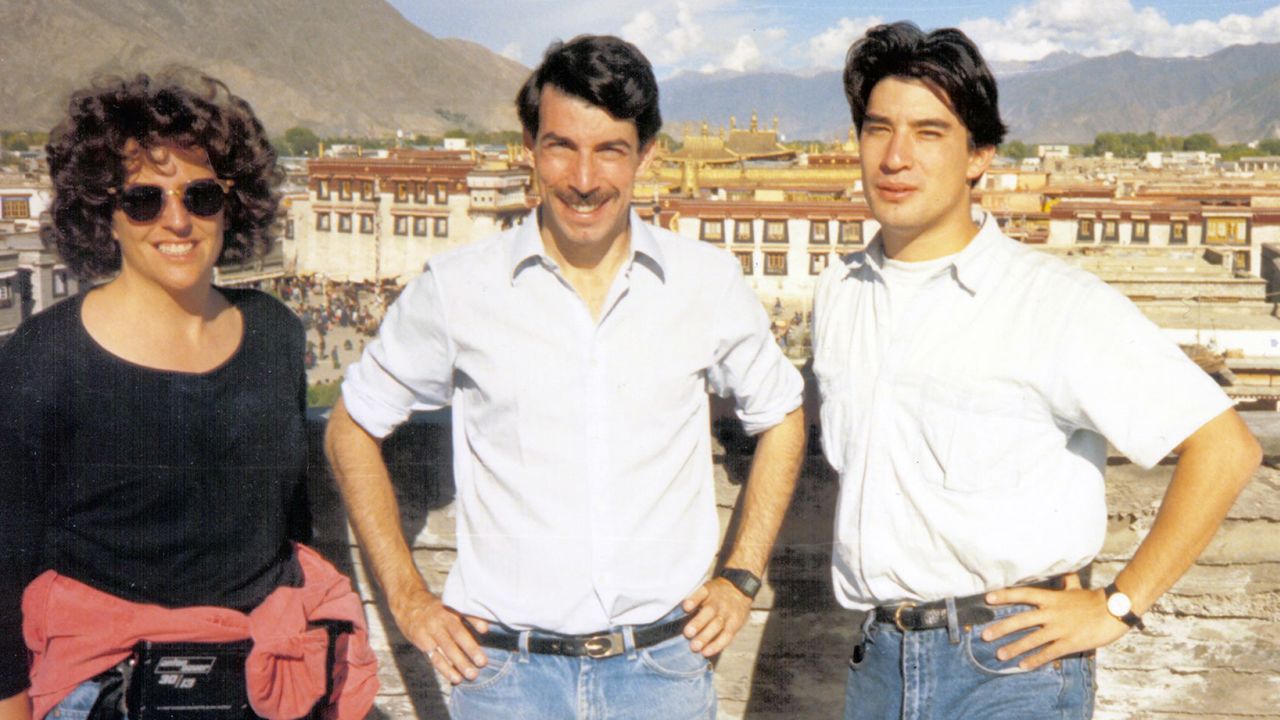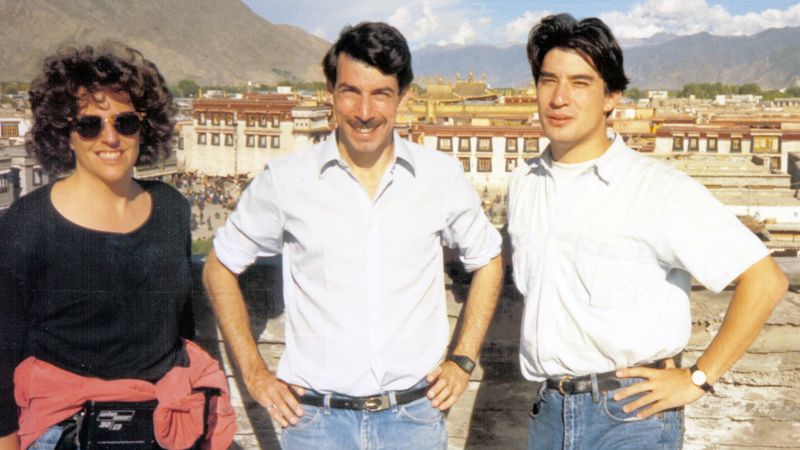Editor’s Note: Mike Chinoy is a Non-Resident Senior Fellow at the University of Southern California’s US-China Institute and a former Beijing Bureau Chief and Senior Asia Correspondent for CNN. His new book is “Assignment China: An Oral History of American Journalists in the People’s Republic.” The views expressed in this commentary are his own. Read more opinion on CNN.
CNN
—
In the summer of 1973, just one year after then-US President Richard Nixon’s historic trip, I made my first visit to China. One of the places I was taken to was the Wusan People’s Commune outside Shenyang in northeast China. There, I met model Maoist peasant Yu Kexin and ate lunch at his modest home. It was the highlight of my visit.

In 1993, as CNN’s Beijing bureau chief, I decided to retrace that trip to see how the country had changed in the intervening 20 years. I managed to find Yu and discovered he was now running a tractor repair shop. He lived in a new flat with a TV. As a beneficiary of the market-oriented reforms introduced by then-senior leader Deng Xiaoping in the 1980s, his life had clearly improved.
As soon as local officials were out of earshot, however, Yu confessed that almost everything I had seen during my first visit had been an illusion. He told me that in fact, conditions then were terrible, and that even the food I had so enjoyed had been trucked in from the city by local officials the day before — just to impress the foreigners.
To me, this episode underscores a central theme in any discussion about covering China — the difficulty of finding the truth in a vast, complicated country with a long history of distrust of outsiders and a secretive and authoritarian political system.
The tension between American journalists seeking to understand Chinese reality and the Chinese Communist Party’s efforts to control the narrative — the central theme of my new book “Assignment China: An Oral History of American Journalists in the People’s Republic” — dates back to the earliest days of the Communist revolution.
Indeed, when Chairman Mao Zedong proclaimed the establishment of the People’s Republic in Tiananmen Square on October 1, 1949, not a single American correspondent was there to cover the event.

For most of the three decades that followed, American reporters were barred from China, forced to cover the country from outside, most notably from the then-British colony of Hong Kong. The China-watchers, as they became known, relied primarily on the official Chinese media, which they monitored religiously looking for clues.
It was not until Nixon’s historic visit in February 1972 that the door began to open, and it was only after the United States and China established formal diplomatic relations in 1979 that American news organizations were finally allowed to open bureaus in Beijing.
What followed were several decades when the People’s Republic became increasingly accessible to American and other foreign journalists, although there were always obstacles and limitations.
When I became CNN’s first Beijing bureau chief in 1987, for example, official regulations required reporters to get permission 10 days in advance for any travel outside Beijing and to be accompanied by a government minder. A brief upsurge in openness in the late 1980s ended with the crushing of pro-democracy protests in Beijing’s Tiananmen Square in 1989.

But as Deng Xiaoping revived his program of market-style economic reforms in the 1990s, the new atmosphere led to a significant improvement in conditions for foreign journalists. It became much easier to travel and local officials were much more accessible. Instead of chasing them away, they often asked American correspondents for advice on how to attract foreign investment.
It was an exhilarating period in which foreign journalists were able to dig into Chinese society in ways that had previously been difficult, if not impossible. We were trying to make sense of the paradoxes of covering a country where a dissident would be jailed on one day, and the next day we’d be reporting on the opening of the world’s largest airport.
Following the 2008 Beijing Olympics, however, China’s domestic political climate and external behavior began to change. The financial crisis that rocked the West in 2008-2009 convinced Chinese leaders that the US was a declining power and that the time was right for Beijing to show a more assertive face to the rest of the world. That included its treatment of the foreign media.
Since then, covering China has become for many an increasingly tense game of cat and mouse with the authorities, as reporters have found themselves regularly tailed, harassed, blocked and even beaten.
Chinese President Xi Jinping’s aggressive campaign to consolidate power in recent years has made conditions for journalists even more difficult. The climate for China-based reporters is more restrictive than at any time since the country embarked on its program of reform in the late 1970s following Mao’s death and the establishment of diplomatic relations with the US.
At the same time, Xi has further tightened Communist Party control and changed Party policies to allow him to rule for life. High-level Chinese politics, always opaque, secretive and a challenge to figure out, have become even more so.
Indeed, although China is in many ways more accessible now, and Xi and other leaders travel, hold meetings and even address organizations like the World Economic Forum in Davos, our knowledge of the inner workings at the pinnacle of power is arguably less than during the Mao years.
Making matters worse for the foreign media was the expulsion of nearly 20 journalists for the New York Times, Washington Post and Wall Street Journal in early 2020. Beijing justified the expulsions as a response to a decision by the Trump administration to cap the number of staff at four state-run Chinese media outlets in the US. But the move decimated the US press corps in China.
Today, just a handful of American reporters remain. What some of those I interviewed for my book described as the “golden age” of covering China, is over. As Steven Lee Myers of the New York Times, one of those expelled in 2020, told me, “It really feels like the door is closing.” Instead, more and more China journalism is being done from outside the country.
In many ways, the situation facing reporters today feels like an ironic throwback to the years of the Hong Kong-based “China-watchers” after the Communist revolution of 1949, when American and other western journalists were barred from China.
In the wake of China’s imposition of a draconian national security law, however, even Hong Kong’s role as a center for observing China has been severely undermined. Instead, Taiwan, South Korea and even Washington have become the new bases for covering the country.
Still, for reporters in these and other locations, the number one tool remains, as it was decades ago, looking for clues in the Chinese media, trying to decipher the real meaning of the rhetoric, slogans, obscure historical references and dubious statistics put out by the Chinese Communist Party.
One recent example: tallying the number of media references to Xi being “at the helm” of the Chinese ship of state, during the just-concluded session of the National People’s Congress. The term previously was only used for Chairman Mao, and the growing number of similar references to Xi provided an important sign of his strengthened grip on power.
But there are resources now that were not available to the China-watchers of old. These include following the Chinese Internet, which, despite censorship, can still provide critical insights.
Commercially available satellite imagery has also become crucially important.
Satellite images helped reporters confirm the existence of detention camps where the Communist Party has imprisoned thousands of Uyghurs and other ethnic minorities in the northwestern province of Xinjiang. Such aerial images of crowding at crematoriums also provided evidence of a much greater death toll than the Communist Party was willing to admit following the ending of the country’s zero-Covid policy late last year.
But the sharp drop in the number of China-based correspondents and increasingly strict limits on access now continues to severely impede the ability of reporters to go around China, talk to people, dig beneath the surface and gain a better understanding of the texture of Chinese society.
The essential foundation for good journalism — being there — has become increasingly difficult. In addition, even when travel is possible, reporters also face a populace many of whom, after years of being told by state media that foreign journalists are spies, are reluctant to talk, if not downright hostile.
As Josh Chin of the Wall Street Journal, who was also expelled in 2020, told me, “Coverage of China is going to become more polarized and less nuanced because you have fewer people to tell the human story about China. It’s become almost impossible to write a story about China that is about people.”
The result is that much of the coverage today is focused on big picture politics or the tensions and conflicts between China and the US, since the official statements and the public actions of governments are easier to follow and report.
What is increasingly missing is the ability of journalists to convey the richness and complexity of the world’s most populous nation — the shared humanity we also need to understand, especially as the US and China lurch ever closer to confrontation.







